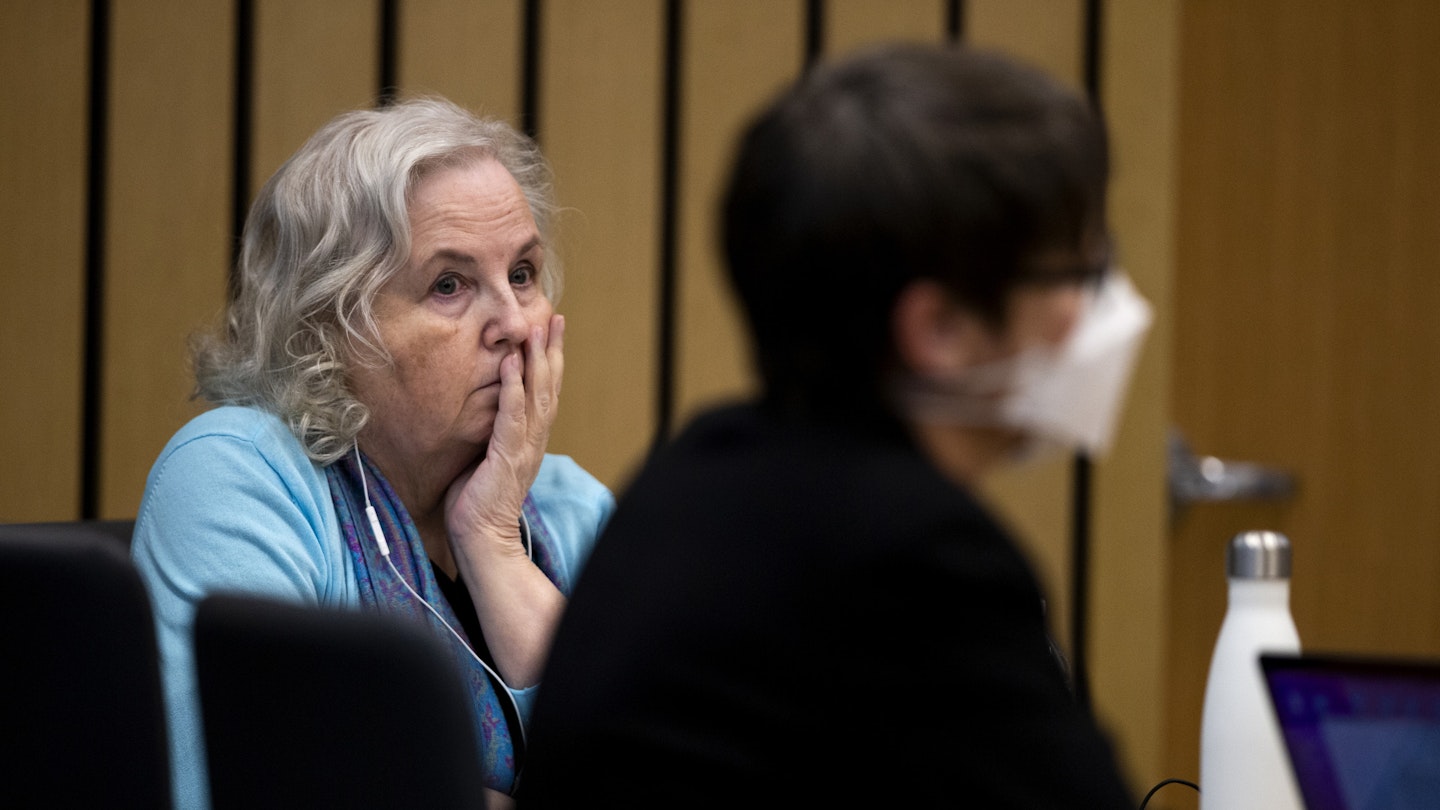A romance novelist from Oregon who wrote an essay entitled ‘How To Murder Your Husband’ has been sentenced to life in prison for murdering her husband.
Nancy Crampton Brophy, 71, a self-published novelist, had denied the murder of Daniel Brophy, a 63-year-old chef.
Prosecutors said it was a crime motivated by greed and a $1.4 million insurance policy.
A court in Portland, Oregon, was told the writer had bought gun components and a handgun before killing her husband. Brophy was shot twice — once in the back and again as he lay dying — while preparing for work at the Oregon Culinary Institute in June 2018.
The jury of seven women and five men found Nancy Crampton Brophy, 71, guilty of second-degree. Her sentence on Monday includes the possibility of parole after 25 years in custody.
Mrs Brophy’s lawyers say they will appeal.
On the early morning of 2 June 2018, Mr Brophy went to work at the Oregon Culinary Institute, where he taught cookery classes. Hours later, he was found dead by his students. He had been shot twice.
Police told Mrs Brophy of her husband’s death at her home. She told them that her husband had arisen around 4am to feed the chickens and walk the dogs, and that she awoke when he came upstairs to have a shower. They discussed a leak in the sink, and she estimated that he left for work a little after 7am.
She also showed them a gun in her closet.
Detectives told the court that at first they ‘felt sad’ for Mrs Brophy following the ‘brutal’ murder of her husband. But when they scoured CCTV of the street they saw an image so jarring it caused them to pause and rewind: an old Toyota minivan that looked exactly like Mrs Brophy’s had driven by the institute that morning at 6.39am, at a time she said she was in bed.
Other cameras showed the van next to the culinary institute at about 7.08am, then again about 20 minutes later, the window of time in which investigators believe that Mr Brophy was killed.
Mrs Brophy had also not disclosed that she had also bought a ‘ghost gun’ kit — a collection of pieces to make an unregistered firearm. And on eBay, they learned, she had bought a slide and barrel assembly that could be used to modify the gun she had turned over to investigators. That assembly was never recovered.
Mrs Brophy testified that she bought the ghost gun kit and slide and barrel assembly for the research of a new book: the tale of a woman in an abusive relationship who turned the tables on her lover by gradually acquiring gun parts each month to slowly build a complete weapon. Bank records show that the payments for the parts came from the couple’s joint account, and Ms. Brophy said her husband was well aware of the purchases, opening the gun kit with her after it arrived in the mail.
The case took another bizarre twist as it emerged that Mrs Brophy had tackled the subject of murdering a husband in a 2011 blog post.
Mrs Brophy’s step-by-step how-to guide detailed various options for committing an untraceable killing and professed a desire to avoid getting caught. The judge ultimately excluded the essay from the trial. A prosecutor, however, alluded to the essay’s themes without naming it after Crampton Brophy took the stand.
She pondered various methods of murder, supposing that knives were too personal, poison was too traceable and hitmen were too untrustworthy. She wrote that guns were messy and required skill.
Jurors accepted the prosecution’s argument that she had executed a convoluted plot for murder. ‘She had the plan in place,’ Shawn Overstreet, a deputy district attorney, said during closing arguments. ‘She had the opportunity to carry out this murder. She was the only person who had the motive.’
For her part, Mrs Brophy and her defence team Ms. Brophy and her defence team had contended that the two were happily married, planning for a future of travel, and that the prosecution’s case was built on ‘suspicion’ and ‘conjecture’.
Yes, there were money troubles. But ‘the love that Nancy and Dan Brophy had was no mere possibility. It was the best-proven fact in this trial,’ said the defence attorney, Kris Winemiller, in closing arguments.
The defence claimed that the surveillance footage provides hints about other potential suspects. The videos show homeless people walking around the neighbourhood, the defence lawyers noted, including footage of one man who hid behind a wall and looked in a bag when police officers arrived on the morning of the killing. Investigators said they had not been able to identify the man. They noted that Mr. Brophy’s wallet, cellphone and car keys were untouched.
Prosecutors conceded that their case was based on ‘all circumstantial evidence’, saying that the jury needed to join together the pieces of ‘a puzzle’ to reach its conclusion.
Four days after the killing, Ms. Brophy spoke to one of the investigators, asking whether he would provide a letter saying she was not a suspect, according to audio of the conversation. The detective, who appeared taken aback, asked why, and Ms. Brophy disclosed that her insurance company was making her provide verification for a $40,000 life insurance claim.
‘They don’t want to pay if it turns out that I secretly went down to the school and shot my husband because I thought, “Hey, going into old age without Dan after 25 years is really what I’m looking for,”’ Ms. Brophy said in the recording.
She was charged with his murder three months later.
